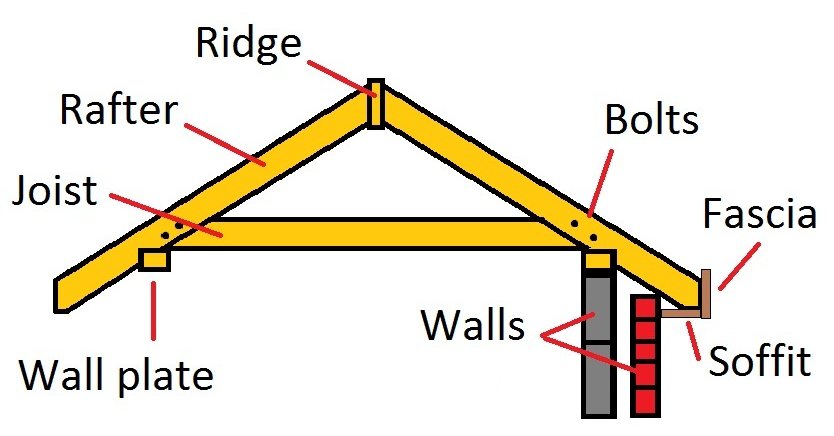Measure as precisely as possible down to the 1 4 inch 0 64 cm 1 8 inch 0 32 cm or 1 16 inch 0 16 cm.
Traditional hand cut roofs.
Use a tape measure to measure the entire width of your building.
A truss roof using factory made trusses which are delivered to site complete and just erected.
This reflects the weatherproofing requirements of older roofing materials like thatch and peg tiles.
The traditional option is steeply pitched rarely less than 35.
Prefabricated trusses which are delivered to site and erected.
A traditional method of cutting timber on site and building up the roof using rafters joists purlins ridge boards etc.
The roof can be cut in the traditional way or fabricated from mono trusses.
You want a pair of straight cuts or left or right handed pair for cutting both straight and around corners.
The finished structure is readily adaptable.
The two basic construction methods of pitched roofs are.
Not only is the volume large enough to convert into living space but the structure can generally be easily altered.
The cheapest way to cut metal roofing is with a pair of tin snips.
The rafters are the main load bearing elements of the roof.
Before you start cutting you first need to determine how long your roof rafters need to be and the angles at which you ll cut the top and bottom of the rafter.
This is a great option for buildings with more complex layout than a simple rectangular of square and is a type of roof that will hold well in rain snow or windy conditions.
50mm wide by 75mm 100mm or 125mm deep are all common.
There are also a number of other framed constructions such as portal frame roofs.
A cut roof this is the traditional method of cutting the timber on site and building up the roof using rafters ridge boards joists and purlins etc the exact details being determined by the size of roof size of timbers etc.
There are two basic methods of pitched roof construction.
Traditional or cut roofs usually comprise a series of sloping timbers rafters fixed to a wall plate at their feet and a ridge board or possibly a wall plate at their head.
The best tin snips are good for cutting any edge of corrugated iron that is going to be seen as they are easy to control when cutting.
A cross hipped roof is a common roof type with perpendicular hip sections that form an l or t shape in the roof hip.
Dormer windows require their own mini roofs and great care must be given to their detailing and construction.
Tin snips can also cut through drip edges and gutters and they are available in right and left hand orientations.
The overall construction of a traditional cut roof is to ensure that the load of the roof is evenly transmitted to the walls below.
They span from the wallplate to the ridge board providing a platform for the underlay battens and tiles.
Every member of a traditional cut roof is individually cut and assembled on site.

